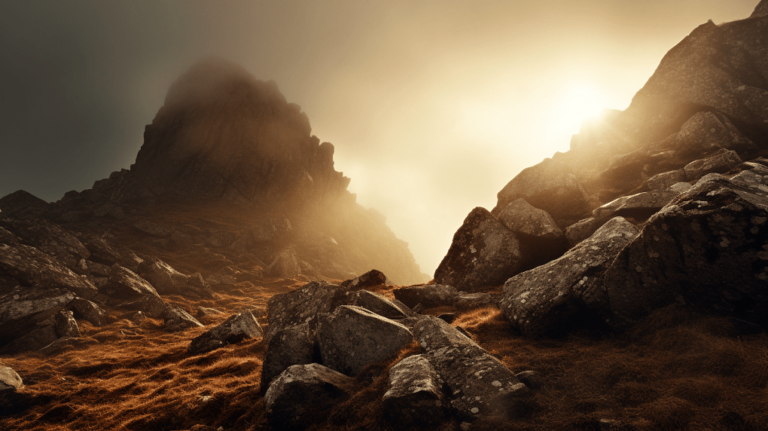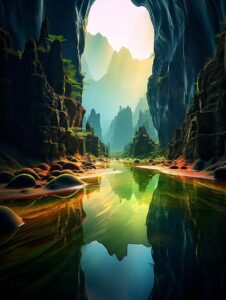
One of the greatest wonders of the world is the magnificent mountains that we see from afar when we travel to rural areas. These mountains have existed even before the dawn of mankind and have been around since the creation of the world. Who wouldn’t be curious about these majestic landforms? Wouldn’t it be a great idea to learn their history and where mountain names come from? In this article, you’ll get to know more about the meaning behind mountain names, their significance in the world, and a few mountain nicknames. You’ll get to know also how mountain names can be formulated so that you can create your name for mountain or mountain nickname.

There are approximately more than a million mountains in the entire world and we humans were only able to name 90% of them, with the remaining 100,000 more remaining unnamed. The origin of mountain names varies depending on the location and the dwellers around it. During ancient times, some tribes share portions of the mountains and will tend to name them depending on their language. Mountain names are often named after their physical appearance, although some mountains were named based on their religion and beliefs— such as Mount Olympus in Greece, the home of the gods.
But mountain name origin does not stop from human observance or spiritual belief. Some mountains were named after real-life iconic people, or fictional people based on folklore or legends. One good example is the Vasco da Gama Peak, named after Vasco da Gama, a Portuguese navigator in the voyage years of the 15th century. The popular Mount Mayon in the Philippines was based on the local legend of Magayon. The term magayon means “beautiful” region’s local language, perfectly describing the appearance of Magayon in the legend, and the stunning symmetrical and almost perfect cone shape of the mountain.
There are also controversial mountain names where the original name of the mountain was erased in history due to conflicts or war. The so-called “Six Grandfathers Mountain”, now called Mount Rushmore, found in South Dakota USA, is a great example. The great granite-walled mountain was first occupied by the local Lakota people. It serves as a place of prayer for the natives of the Great Plains before colonists even occupied the region. In the late 18th century, the Black Hills, to which the mountain is situated, were invaded by Euro-American settlers, creating a war against the indigenous people. IN 1868, the U.S. government signed the Treaty of Fort Laramie to end the conflict, granting the Lakota locals an exclusive right in the entire Black Hills region. However, in 1877, gold was discovered in the region, prompting the greedy senate of the U.S. government to break the treaty and take over the land by force from the Lakota. Settlers, miners, and prospectors began pouring into the region, forcing the indigenous people away from their homes. In 1884, Attorney Charles Rushmore visited the area and made an expensive deal on a tin mine, thus the entire region being renamed after him. Mount Rushmore is famous for the four US presidents’ faces sculpted at the edges of the mountain. With the depleted gold and extracted ore, it stands still as a tourist attraction hiding behind it a bloody history.
Of all the million named mountains in the world, few have their nicknames. While most mountain names are already stand-alone and easy to recall for most people, there are a few who earned exceptions because of their unique characteristics. Mountain nicknames are used to identify and create a title for the mountain based on their unique description or symbolic effect on humans. Also, since there are mountain names that were renamed for some reason, they can still be associated with their former names instead.
The K2 peak, also known as Mount Godwin Austen and nicknamed the Savage Mountain, is the second-highest peak in the world. It is located in the Karakoram Range, bordering the countries of Pakistan, China, and India. During the first survey exploration at the Karakoram Range, surveyors named every high peak they encountered with the letter “K” followed by a number. The K2 peak itself is not visible on the low lands which is why there is no local name given to it. This mountain earned its nickname for holding the record of the “deadliest” of the highest mountain, killing approximately 1 of every four people who hike the summit.
The Gasherbrum I, also known as “K5” is considered the 11th highest mountain in the world. It is the 5th peak of the Karakoram Mountain Range and is widely known for its moniker, The Hidden Peak because of its extreme remoteness among the other mountain peaks.
The Nanga Parbat, meaning “naked mountain” , is found in the Gilgit-Baltistan region of Kashmir, Pakistan. It is the westernmost peak of the Himalayan mountain range and owns the record for the second-highest prominence of all the tallest mountains after Mount Everest. It was nicknamed “the killer mountain” for its extremely treacherous climb which causes huge fatalities for aspiring climbers.
While this nickname might sound weird at first, it is important to know the reason behind this nickname. The Taal Volcano or simply Mount Taal is one of the lowest volcanoes in the world, towering only at 311 meters. It is a caldera volcano situated in the middle of Taal Lake. It is said that the entire surrounding lake was once the foot of the larger mountain until it erupted violently around 140 Million years ago, forming the caldera and sinking the surrounding regions in water. It is nicknamed a “beautiful disaster” for its formation being caused by violent volcanic activity, creating the very beautiful small volcano in the middle of the lake.

As a basic rule of thumb, mountains are named after the people who discovered them. But it will all boils down to who first declared that they discovered it. Most named mountains today almost always have a local name since some surveyors or explorers decided to name the mountains they discovered on their own, even though there are existing indigenous groups who dwell beneath the mountain itself.
But do we have a correct naming convention to follow in naming a mountain? There is none. Mountains can be named either through their physical characteristics, native religion, or through the names of people who discovered them. It is also worth knowing that the local language of the natives is also a factor in the creation of mountain names. Check out some of the list of existing mountains below.

Have you ever thought about relating mountain names with fantasy world creation and storytelling? Most Role Playing Games (RPG) often do this by openly introducing lore on interactive places across in-game such as rivers, villages, seas, and mountains. Mountainous regions, for example, are the most common landscapes encountered by players in an Open-World map of an RPG. Game developers will almost always provide names for mountains and add a touch of rich story behind them.
One of the popular classic RPG game examples is the World of Warcraft, and within it comes numerous mountain regions each with individual mountain names. Among the many mountainous places in the game, it is Highmountain which is filled with lore and secrets from the past of Azeroth.
The Highmountain region encompasses most of the northern horizon of the Broken Isles. It is known for its jagged mountain peaks and is among the tallest mountains in the entire Azeroth. The dwellers of the Highmountian region are called Highmountain Taurens. They are a race of Taurens who are blessed by Cenarius for their war efforts in the War of the Ancients. The name “Highmountain” is associated with both the mountain region and the Tauren dwellers in it were named after the Highmountain Tauren tribe led by Huln Highmountain.
The history of the Highmountain dates back ten thousand years ago during the War of the Ancients. The Burning Legion invaded the lands of Azeroth, staking most parts of the Broken Isles into chaos. It is by this era that Huln Highmountain rose from the mountains and gathered all the brave heroes and warriors of all the Tauren tribes to aid the Night Elves in fighting the Burning Legion. For their bravery and participation in the war, and for rescuing the moose Eche’ro, Huln, and his follower earned the friendship and favor of the Wild God Cenarius. As a reward, they were granted the Horns of Eche’ro, transforming all their bovine horns into moose-like antlers. This change of horns serves as a blessing to remind them of their forever favor with Cenarius.
The jagged mountainous regions of the Broken Isles were then named after Huln: Highmountain; with his kin and descendants being called the Highmountain Tauren, bearing the Horns of Eche’ro.
You reached the end of the road with us in knowing more about mountain names. To summarize things, here are some key takeaways that you should remember.
First, mountain names are often derived from physical appearance, cultural and religious beliefs, legends or folklore, and names of historical figures. We use mountain nicknames to identify the characteristics of the mountain based on its unique description or effect on humans. Some mountains that were renamed can still use their former names as an identity for themselves. For example, a mountain with a high mobility rate for trekkers may be called “A killer mountain”, while a mountain that is covered in snow-white ice caps may be called a “White Mountain, and so on.
Second, mountain names can also be named after the person who discovered them. Although there are instances that the name of the mountain is based on a prominent figure instead—though they have nothing to do with its discovery. We can also create mountain names based on the physical attribute and religious beliefs of the people thriving near it.
Third, mountain names can also exist and be used in a fantasy-inspired world setup. We can use mountain names to identify important regions across the map or create lore behind the mountain name to enhance the history and storytelling in your world.
Having a hard time thinking or formulating your mountain name? Always pay attention to existing mountain names and try to study and research how their names were formulated, or find out the meaning behind the name itself. Thankfully, there is an easier method by which we can formulate more mountain names efficiently and faster! – Through Mountain Name Generators.
A Mountain Name Generator is specifically designed to suggest mountain names to its users. They are programmed to suggest mountain names, following the correct naming convention and thought. What’s more enticing in using Mountain Names is their ease of usage and they are free. Check out your browser and search for the best Mountain Name Generator that fits your needs.
